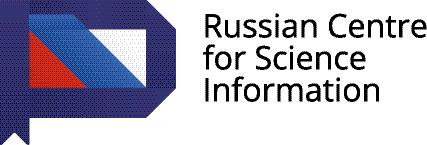Multimodal approach to the treatment of hepatocellular carcinoma
- 作者: Skipenko OG1, Chekunov DA1, Shatverian GA1, Bagmet NN1, Sekacheva MI1, Polyakov RS1, Bedzhanyan AL1, Abdullaev AG2, Moysyuk Y.G3
-
隶属关系:
- Russian scientific center of surgery named after academician B.V.Petrovsky
- I.M.Sechenov First Moscow State Medical University of the Ministry of Health of the Russian Federation
- Federal Research Center of Transplantology and Artificial Organs named after academician V.I. Shumakov
- 期: 卷 17, 编号 3 (2015)
- 页面: 61-69
- 栏目: Articles
- URL: https://journals.rcsi.science/1815-1434/article/view/27029
- ID: 27029
如何引用文章
全文:
详细
作者简介
O Skipenko
Russian scientific center of surgery named after academician B.V.Petrovsky
Email: oskripenko@mail.ru
д-р мед. наук, проф. ФГБНУ РНЦХ им. акад. Б.В.Петровского 119991, Russian Federation, Moscow, GSP-1, Abrikosovskii per., d. 2
D Chekunov
Russian scientific center of surgery named after academician B.V.Petrovskyхирург ФГБНУ РНЦХ им. акад. Б.В.Петровского 119991, Russian Federation, Moscow, GSP-1, Abrikosovskii per., d. 2
G Shatverian
Russian scientific center of surgery named after academician B.V.Petrovskyд-р мед. наук, ФГБНУ РНЦХ им. акад. Б.В.Петровского 119991, Russian Federation, Moscow, GSP-1, Abrikosovskii per., d. 2
N Bagmet
Russian scientific center of surgery named after academician B.V.Petrovskyканд. мед. наук, ФГБНУ РНЦХ им. акад. Б.В.Петровского 119991, Russian Federation, Moscow, GSP-1, Abrikosovskii per., d. 2
M Sekacheva
Russian scientific center of surgery named after academician B.V.Petrovskyканд. мед. наук, ФГБНУ РНЦХ им. акад. Б.В.Петровского 119991, Russian Federation, Moscow, GSP-1, Abrikosovskii per., d. 2
R Polyakov
Russian scientific center of surgery named after academician B.V.Petrovskyканд. мед. наук, ФГБНУ РНЦХ им. акад. Б.В.Петровского 119991, Russian Federation, Moscow, GSP-1, Abrikosovskii per., d. 2
A Bedzhanyan
Russian scientific center of surgery named after academician B.V.Petrovskyканд. мед. наук, ФГБНУ РНЦХ им. акад. Б.В.Петровского 119991, Russian Federation, Moscow, GSP-1, Abrikosovskii per., d. 2
A Abdullaev
I.M.Sechenov First Moscow State Medical University of the Ministry of Health of the Russian Federationд-р мед. наук, проф. ГБОУ ВПО Первый МГМУ им. И.М.Сеченова 119991, Russian Federation, Moscow, ul. Trubetskaia, d. 8, str. 2
Ya Moysyuk
Federal Research Center of Transplantology and Artificial Organs named after academician V.I. Shumakovд-р мед. наук, проф. ФГБУ ФНЦТИО им. акад. В.И.Шумакова 123182, Russian Federation, Moscow, Shchukinskaia ul., d. 1
参考
- Lafaro K.J, Demirjian A.N, Pawlik T.M. Epidemiology of Hepatocellular Carcinoma. Surg Oncol Clin N Am 2015; 24 (1): 1-17.
- Llovet J.M, Ducreux M, Lencioniet R et al. EASL-EORTC Clinical Practice Guidelines: Management of hepatocellular carcinoma. J Hepatol 2012; 56: j908-43.
- Вишневский В.А., Кубышкин В.А., Чжао А.В. Операции на печени. Руководство для хирургов. М.: Миклош, 2003; с. 50-6.
- Brunello F, Veltri A, Carucci P et al. Radiofrequency ablation versus ethanol injection for early hepatocellular carcinoma: A randomized controlled trial. Scand J Gastroenterol 2008; 43 (6): 727-35.
- Lin S.M, Lin C.J, Lin C.C et al. Randomised controlled trial comparing percutaneous radiofrequency thermal ablation, percutaneous ethanol injection, and percutaneous acetic acid injection to treat hepatocellular carcinoma of 3 cm or less. Gut 2005; 54 (8): 1151-6.
- Cheng A.L, Kang Y.K, Chen Z et al. Efficacy and safety of sorafenib in patients in the Asia-Pacific region with advanced hepatocellular carcinoma: a phase III randomised, double - blind, placebo - controlled trial. Lancet Oncol 2009; 10 (1): 25-34.
- Llovet J.M, Ricci S, Mazzaferro V et al. SHARP Investigators Study Group. Sorafenib in advanced hepatocellular carcinoma. N Engl J Med 2008; 359 (4): 378-90.
补充文件





